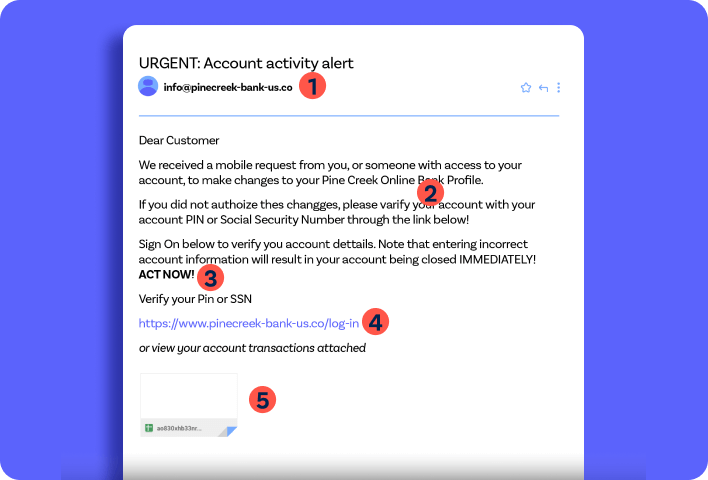Red Flags of Email Scams
Email Scams

-
-
Unusual Email Address: Slow it down. Does that look like an email address your bank would use? Be wary of unexpected emails from addresses that aren’t like the ones your bank typically employs.
-
Misspelled Words: Spot check! If you see misspelled words or odd grammar, they are all clear signs of an impersonator. Real banks use spell check.
-
Scare Tactics: Don’t panic. If an email uses scare tactics, such as urgent warnings of account closure or security breaches, you can safely assume it’s a scam.
-
Suspicious URLs: Hold up — banks will never ask you to log in via email. Phishing emails use deceptive URLs to take you to malicious websites. Never click links that you weren’t expecting.
-
Unexpected Attachments: Something’s phishy, because real banks will never send an email attachment — especially when you didn’t ask for it. Attachments can contain malware that can compromise your computer or personal information. Never click on attachments from emails supposedly from your bank.








